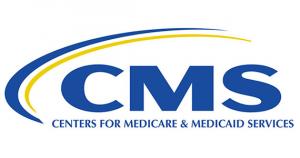CMS: Medicare Savings Program enrollment streamlined; will save money for ~860,000 people

via the Centers for Medicare & Medicaid Services (CMS):
The Centers for Medicare & Medicaid Services’ (CMS’) final rule will make it easier for millions of eligible people to enroll in and retain their Medicare Savings Program (MSP) coverage. The final rule reduces red tape and simplifies Medicare Savings Program enrollment, helping millions of seniors and people with disabilities afford coverage. The final rule follows President Biden’s executive orders in January 2021, December 2021, and April 2022, directing federal agencies to take action to expand affordable, quality health coverage.
The MSPs are eligibility groups through which Medicaid pays Medicare premiums and, for most enrollees, cost-sharing for Medicare beneficiaries who have limited incomes. Through the MSPs, Medicaid pays Medicare Part B premiums each month for over 10 million individuals and Part A premiums for over 700,000 individuals. The MSPs are essential to the health and well-being of those enrolled, promoting access to care and helping free up individuals’ limited income for food, housing, and other life necessities. However, certain current MSP application and verification policies contribute to under enrollment in the MSPs. CMS has identified opportunities to ease administrative burden for states and reduce barriers to enrollment for eligible individuals. By addressing these issues in the final rule, CMS estimates 860,000 individuals will newly enroll in MSPs.
Impact
Reducing Red Tape
The final rule eliminates duplicative paperwork and leverages data from other programs. CMS estimates this will save older adults and people with disabilities nearly 19 million hours of paperwork each year and reduce administrative burden on state government by over 2 million hours each year.
Reducing Costs for Individuals
The final rule will reduce Medicare premiums and out-of-pocket costs for an estimated 860,000 eligible people by helping them to enroll in the MSPs. Additionally, current MSP verification processes impose a substantial burden on individuals because individuals must gather extensive paperwork and mail copies to states. The final rule places emphasis on states reviewing electronic sources and accepting self-attestation, saving older adults and people with disabilities over $87 million on transportation, copying, postage, and other related costs.
Streamlining Application and Enrollment
Many people eligible for the MSPs never enroll due to complexity of the application process. Others lose their MSP coverage due to administrative challenges with renewing coverage. This rule will make the process of applying and enrolling easier by: 1) automatically enrolling certain individuals into the Qualified Medicare Beneficiary (QMB) group and; 2) better leveraging Medicare Part D Low-Income Subsidy data.
Automatic enrollment of Supplemental Security Income (SSI) recipients eligible for Medicare into the QMB group
Individuals on Medicare who also receive SSI are always financially eligible for the QMB MSP eligibility group, yet many states require separate applications for QMB. As a result of this requirement, CMS estimates that in 2022, over 500,000 Medicare-eligible SSI recipients (over 16 percent) are not enrolled as QMBs. This final rule, with a few exceptions, eliminates the extra application to become a QMB and automatically enrolls these SSI individuals as QMBs, allowing them to gain important Medicare premium and cost-sharing assistance. The final rule allows (but does not require) states that use the group payer process to automatically enroll individuals who receive SSI in the QMB eligibility group.
Additionally, individuals who live in states that have either more restrictive financial methodologies and/or more restrictive disability methodologies for determining Medicaid eligibility than SSI or require separate application for determining Medicaid eligibility (209(b) or SSI-criteria states) will still need to apply for Medicaid separately to enroll in QMB.
Using Low-Income Subsidy (LIS) “leads” from Medicare Part D to enroll individuals in MSPs
The MSP and LIS programs both assist individuals who have limited incomes in accessing the Medicare benefits to which they are entitled. The MSPs and LIS have similar income and resource eligibility criteria, but many people enrolled in the LIS program are not enrolled in an MSP, despite likely being eligible. In this final rule, we streamline the enrollment process from LIS to MSP by requiring states to use the LIS information both as an application for MSP and when making an MSP eligibility determination. The final rule will reduce documentation burden and streamline enrollment of eligible LIS recipients into MSPs.
Reducing Costs of Prescription Drugs
Enrollment in the MSPs automatically confers enrollment into the Medicare Part D LIS program. As such, this rule will further the Administration’s work to reduce out-of-pocket costs for drugs under Medicare Part D. Concurrently, CMS and the Social Security Administration are preparing to implement provisions of the President’s lower cost prescription drug law that expand eligibility for the full LIS benefit, allowing an estimated 300,000 people to have lower drug costs starting January 1, 2024. Taken together, today’s final rule and the drug law’s expansion of the LIS program represent the most significant action in nearly a decade to make Medicare more affordable for eligible older adults and people with disabilities.
Protecting Vulnerable Individuals from Medicare Premiums and Cost-sharing at the Earliest Possible Date
Most individuals enrolled in Medicare qualify for Part A without paying a premium (premium-free Part A), but some individuals have not worked enough hours to qualify for premium-free Part A. Individuals who lack premium-free Part A are more likely to have worked in the informal economy in low-wage jobs. The final rule clarifies that individuals who owe a premium for Part A and live in certain states can get QMB coverage of Parts A and B premiums and cost-sharing on the earliest possible date.
How to support my healthcare wonkery:
1. Donate via ActBlue or PayPal
2. Subscribe via Substack.
3. Subscribe via Patreon.



